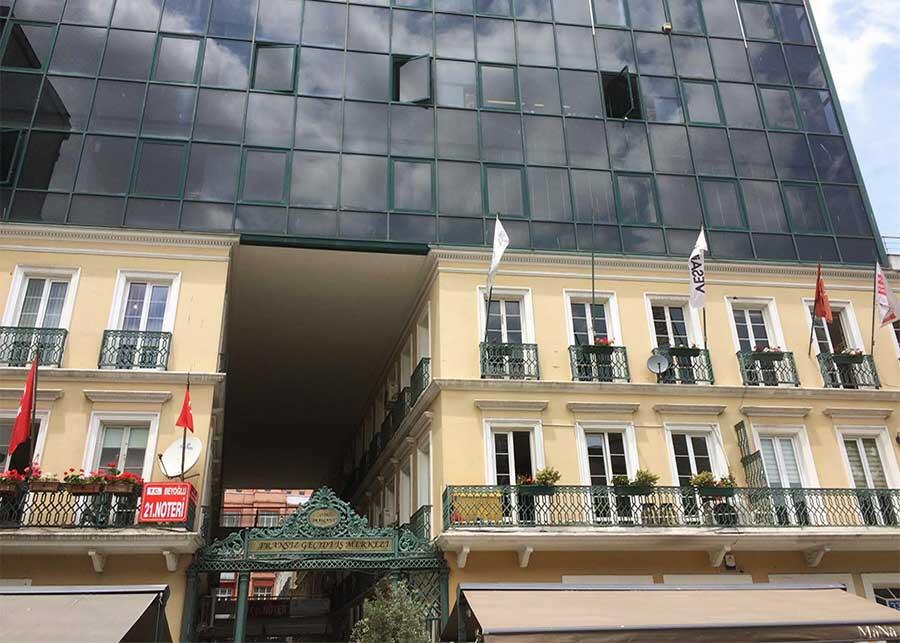
Our priority for this trip was collaborative, multidisciplinary research, with a presentation of initial findings at the trip’s end. As a group, our academic specializations are as varied as our personal connections to the city, but we found ourselves drawn to many of the same points of contrast: the competition for space in Istanbul is a visual cacophony, and there are certain neighborhoods where this clash feels particularly sharp. We determined that a site of recent gentrification can serve as a focal point for our divergent perspectives.
We’ve set our sights on a particularly layered, rapidly-evolving strip in the former European quarter, erstwhile industrial port, neglected neighborhood, and current gentrification hub of Karaköy. This site embodies so many threads of Istanbul’s urban history: gentrification and continued decay, state reclamation and private preservation, and a real sense of community despite high rates of commuter employment and business ownership.
Professor Güvenç, along with fellows and staff, at the Kadir Has University’s Istanbul Studies Center offered guidance and support based on their latest geographic study and surveys. The directories of citizens, complete with demographic-identifying data, that date back to late Ottoman rule and extend into the early Republican era, proved especially helpful in discerning ownership, residency, and economic activity in our little corner of the city.
In the spirit of the Harvard Mellon Urban Initiative, we’ve inspected this site in ways beyond our traditional methods. We hoped to trade the history of individual structures and to discern schemes of either preservation or change. This requires more than a thorough comparison of maps and demographic data from the past century: it calls for interaction and interviews, conversations with business owners, employees, the few residents, and members of the many mosques and churches that still stand. We art historians conducted ethnography and designers read and absorbed nineteenth-century history, and thus patterns began to emerge.
In addition to its rich variety of older structures, Karaköy is home to an equally remarkable range of business establishments: a long-time barbershop steps away from a shiny new upscale design store, for example, or a cutting-edge men’s fashion shop neighboring a no-frills hardware seller, not to mention a sizable block of electronics wholesale stores in addition to the many new hip cafes. We found the Karaköy area to be a strikingly dense and multi-layered example of commercial co-existence. These juxtapositions made us curious about the people who worked in these establishments and their relationships with the rest of the city:
Where did they live in Istanbul?
How did they get to work?
Where were they originally from?
After dozens of short interviews and animated responses, we found that the more traditional the establishment was (e.g. barbershop, newspaper kiosk, machine shop), the more likely the owner or staff member was to be from Istanbul; whereas the newer, trendier shops tended to be staffed and run by individuals who had recently moved to the city. Similarly, the individual we interviewed who lived by far the closest to work — “3 minutes on foot” — turned out to be the owner of an orange juice stand. This began to paint a very preliminary, but more concrete, picture of the gentrification process at work in the neighborhood.
After overlaying maps from representative periods of twentieth century Karaköy, we were able to identify , via photographic and extensive on-site observation, structures that had survived neglect and active demolition. We found particular categories of structures resistant to change, for reasons as varied as their functions: Imperial and early Republican government buildings, large commercial centers (European-styled passages and uniquely Ottoman hans), large-scale butcheries and slaughterhouse (as well as all the stables and housing they would require), and most of all, minority-population churches and their surrounding complexes.





